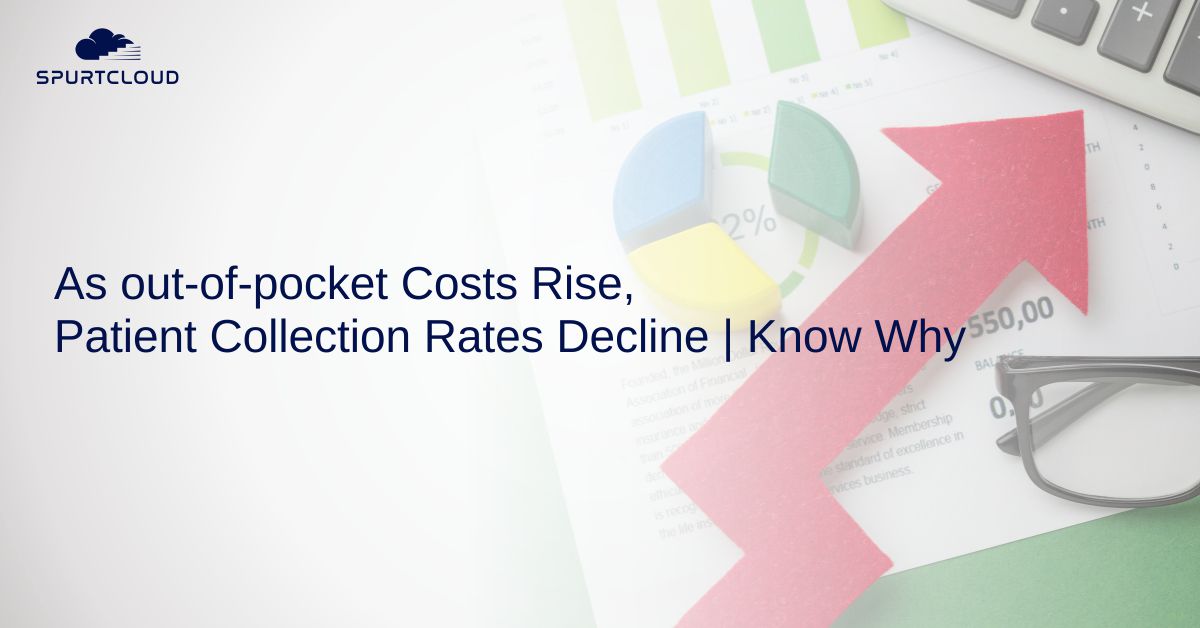According to a Crowe Horwath study,
hospitals collect significantly less from patients with higher out of the pocket costs. The study found out that, collection rates for patients with bills over $5,000 were four times lower than those with low deductibles health plans.
Now, It is common for patient collection rates to drop as out-of-pocket costs go up. Patients facing higher out-of-pocket costs may be less likely to seek medical care or delay seeking care until their condition worsens. In addition, when patients do receive medical care, they may be less likely to pay their bills in full or on time, leading to lower collection rates for healthcare providers.
Several factors can contribute to higher out-of-pocket costs for patients. One factor is the increasing prevalence of high-deductible health plans, which require patients to pay a significant portion of their healthcare costs before insurance coverage. Another factor is the rising cost of healthcare services, which can lead to higher co-pays and co-insurance for patients.
Other factors that can contribute to higher out-of-pocket costs for patients include:
- Co-insurance and copayments: Patients may be responsible for a percentage of the cost of healthcare services, known as co-insurance, or a fixed fee for each visit, known as a copayment. Higher co-insurance and copayment rates can lead to higher out-of-pocket costs for patients.
- Non-covered services: Some healthcare services may not be covered by insurance, leaving patients responsible for paying the entire cost out of pocket.
- Out-of-network expenses: If patients receive care from providers, not in their insurance network, they may be responsible for paying a higher percentage of the cost.
- High-cost procedures and treatments: Some medical procedures and treatments can be expensive, even with insurance coverage. Patients may be responsible for a significant portion of these costs, leading to higher out-of-pocket expenses.
- Prescription drug costs: Patients may be responsible for a portion of the cost of prescription medications, which can be especially expensive for patients with chronic or complex health conditions.
To address this issue, healthcare providers may need to explore alternative payment models or work with patients to set up payment plans. Additionally, providers may need to communicate more clearly with patients about the cost of care and their financial responsibilities and work to identify and address any barriers to accessing care.
Furthermore, policymakers may need to consider measures to address the underlying causes of rising patient collection rates and improve access to affordable healthcare for all patients.
Read more: Are You Making These Costly Patient Collection Mistakes?
What are Patient Collection Rates?
Patient collection rates refer to the percentage of patient balances a healthcare provider successfully collects. This metric assesses the effectiveness of a provider’s billing and collection processes.
The patient collection rate is calculated by dividing the amount of patient payments collected by the total amount of patient balances owed. For example, if a healthcare provider collects $9,000 from patients in a month and has $10,000 in inpatient balances owed, the patient collection rate for that month would be 90%.
A high patient collection rate indicates that a healthcare provider effectively collects patient balances and manages accounts receivable. On the other hand, a low patient collection rate may suggest that a provider’s billing and collection processes need improvement or that patients are having difficulty paying their bills.
What are out-of-pocket medical expenses?
Out-of-pocket medical expenses are costs for medical care that are not covered by insurance and must be paid for by the patient. These expenses may include deductibles, copayments, co-insurance for medical services, and the cost of prescription drugs, medical equipment, and other healthcare-related expenses.
Deductibles are a fixed amount the patient must pay before insurance coverage. Copayments and co-insurance are costs the patient must pay for each medical service or procedure. Co-insurance is a percentage of the total cost, and copayments are fixed.
Out-of-pocket medical expenses can vary greatly depending on the type of insurance coverage a patient has, the type and frequency of medical services they require, and the cost of healthcare in their region. High out-of-pocket expenses can create a significant financial burden for some people, so it’s important to carefully review and understand your insurance coverage and the potential out-of-pocket costs associated with your medical care.
Examples of out-of-pocket medical expenses may include
- Deductibles: The amount of money a patient must pay before their insurance coverage begins.
- Copayments: A fixed amount a patient must pay for a particular healthcare service, such as a doctor’s visit or prescription medication.
- Co-insurance: A percentage of the cost of a healthcare service that a patient must pay after their insurance coverage has kicked in.
- Non-covered services: Some healthcare services, such as elective cosmetic procedures, may not be covered by insurance.
- Out-of-network expenses: If a patient receives care from a provider, not in their insurance network, they may be responsible for paying a higher percentage of the cost.
Out-of-pocket medical expenses can be a significant financial burden for many patients, especially those with chronic or complex health conditions. Patients need to understand their insurance coverage and budget for these expenses accordingly.
Are you facing the following issues?
Wasting time doing repeating tasks like sending manual reminder through email and sms?
Losing track of customer requests like handing disputes?
Increased DSO and reduced cash collection?
Get in touch with us to learn how SpurtCloud can help digitize your A/R Department.


